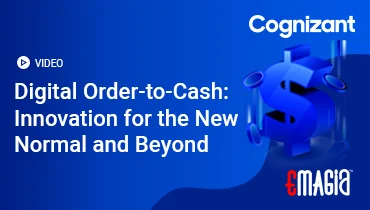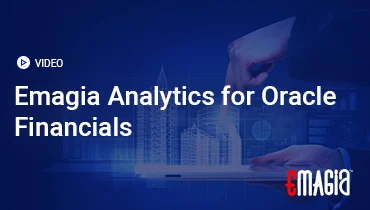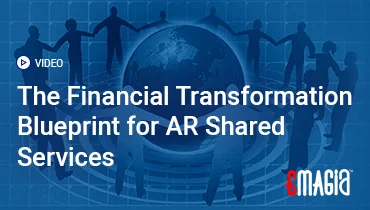In the world of business, it’s a well-known axiom that “cash is king.” A company can be profitable on paper, with a healthy sales pipeline and impressive revenue figures, but without a steady flow of liquid cash, it cannot meet its day-to-day obligations. This fundamental truth makes cash flow management one of the most critical aspects of financial health for businesses of all sizes, from a small startup to a global enterprise. The challenge lies in the dynamic nature of cash flow, with money constantly moving in and out, often at unpredictable times.
The traditional methods of managing cash flow—relying on static spreadsheets, manual data entry, and fragmented bank reports—are no longer sufficient in today’s fast-paced environment. These outdated processes are not only time-consuming and prone to human error but also fail to provide the real-time visibility and forward-looking insights that modern businesses need to thrive. The need for a more dynamic, automated, and intelligent solution is what has driven the widespread adoption of specialized software for cash flow management.
The Digital Revolution in Financial Control: What is Cash Flow Management Software?
At its core, a software for cash flow management is a sophisticated tool designed to automate the tracking, forecasting, and analysis of a company’s financial inflows and outflows. It moves beyond simple accounting by providing a holistic, real-time view of an organization’s liquidity. This type of software aggregates data from multiple sources, including bank accounts, accounts receivable (AR), and accounts payable (AP), to provide a single, unified source of truth.
This technology transforms the reactive process of checking bank balances into a proactive strategy of financial control and foresight. It empowers financial leaders to make informed decisions by providing a clear picture of their current cash position and, more importantly, a reliable projection of future cash balances. This foresight is crucial for everything from planning for new investments to preparing for potential financial bottlenecks.
Essential Features That Define a Robust Cash Flow Solution
While different software solutions may offer a variety of features, a truly effective cash flow management platform should include a few core functionalities that are non-negotiable for modern financial operations. These features enable businesses to gain control, improve efficiency, and make smarter, data-driven decisions.
- Automated Bank Reconciliation: The software automatically connects to bank accounts, pulling in real-time transaction data and matching it against records in your accounting system. This eliminates the tedious, manual process of reconciliation and ensures data accuracy.
- Real-Time Cash Position Dashboards: A central, intuitive dashboard provides a live snapshot of cash inflows and outflows. This visibility allows finance teams and executives to see exactly where their money is at any given moment, enabling quick responses to liquidity needs.
- Predictive Forecasting and Modeling: This is arguably the most powerful feature. The software uses historical data and advanced algorithms to forecast future cash flow. It also allows for “what-if” scenario planning, so businesses can simulate the financial impact of different decisions, from a new product launch to an economic downturn.
- Integrated Accounts Receivable and Accounts Payable: By linking AR and AP data, the software can provide a more accurate and comprehensive forecast of cash inflows and outflows. It can also automate tasks like sending payment reminders and scheduling vendor payments to optimize timing.
- Customizable Reporting and Analytics: The ability to generate custom reports and analyze key performance indicators (KPIs) like Days Sales Outstanding (DSO) helps to identify cash flow bottlenecks and uncover trends. This data-driven insight is essential for continuous improvement.
Transforming Financial Operations: The Business Impact
The adoption of dedicated software for cash flow management is a strategic move that delivers tangible benefits across the entire organization. These advantages go far beyond simply automating tasks and fundamentally change how a business operates and makes decisions.
Enhanced Financial Control and Stability
By providing an accurate, real-time view of cash flow, the software helps businesses **proactively manage their liquidity**. This foresight allows them to avoid costly cash shortfalls and confidently meet financial obligations, even during periods of uncertainty. It is the foundation of financial stability.
Accelerated Decision-Making
With instant access to clean, reliable data and forward-looking forecasts, business leaders can make **smarter, faster decisions**. Whether it’s seizing a new investment opportunity, adjusting a budget, or negotiating better terms with a supplier, the insights provided by the software enable agility.
Optimized Working Capital
A key benefit of software for cash flow management is its ability to optimize the entire Order-to-Cash (O2C) cycle. By automating and streamlining processes like billing, collections, and cash application, the software helps businesses **reduce their Days Sales Outstanding (DSO)** and unlock trapped working capital.
Improved Efficiency and Productivity
Automating manual tasks frees up finance professionals from time-consuming, repetitive work. This allows them to focus on more strategic, value-added activities, such as financial analysis, risk management, and planning for future growth, thereby **increasing overall team productivity**.
A Partner in Financial Transformation: How Emagia Helps
While many tools offer basic cash flow management features, a holistic solution that integrates with and optimizes the entire financial ecosystem is what truly drives transformation. Emagia provides a powerful, AI-driven platform that elevates the entire Order-to-Cash process, which is the primary engine of a company’s cash flow. Their software is built to go beyond simple tracking and forecasting to provide intelligent, autonomous financial operations.
Emagia’s platform uses advanced AI and machine learning to automate key cash flow drivers, including credit risk assessment, receivables management, and cash application. The software automatically applies payments to invoices, even in complex scenarios, and intelligently prioritizes collections based on customer risk and payment history. By providing a single, unified dashboard with real-time analytics, Emagia gives finance leaders the **visibility and control they need to optimize their working capital**. The platform’s predictive capabilities allow for highly accurate cash flow forecasting, enabling businesses to confidently plan for the future, reduce financial risk, and convert their revenue into a healthy, predictable stream of cash.
FAQs – Gaining Clarity on Cash Flow Management
What is the difference between profit and cash flow?
Profit is the total revenue minus total expenses over a period. It is a measure of profitability, not liquidity. Cash flow refers to the actual movement of cash into and out of a business. A company can be profitable on paper but have a negative cash flow if its customers are slow to pay or if it has a large number of outstanding invoices.
How often should a business forecast its cash flow?
The frequency of cash flow forecasting depends on the business’s volatility and size. For many, a weekly or bi-weekly forecast is a good practice to stay on top of short-term liquidity. For more stable businesses, a monthly forecast may suffice. The key is to make it a regular, ongoing process.
What are the main causes of negative cash flow?
Common causes of negative cash flow include a high number of overdue payments from customers, excessive or unplanned spending, poor inventory management, and a lack of proper financial planning. Software for cash flow management helps to identify and mitigate these issues proactively.
Can cash flow management software prevent fraud?
Yes. Many modern cash flow management solutions have built-in security features and audit trails. By providing a centralized, transparent record of all financial transactions and flagging unusual activity, they can help to identify and prevent fraudulent transactions or unauthorized payments.
Is cash flow management software expensive?
The cost of cash flow management software varies widely depending on the provider, the features included, and the size of the business. However, the long-term benefits—such as increased revenue recovery, reduced operational costs, and improved financial stability—often far outweigh the initial investment, making it a highly cost-effective solution.



